When replacing brake pads or a brake disc, be sure to replace the pads or disc on the other side of the vehicle.
Place the vehicle on a two-post lift.
Install a pressure device on the brake pedal to reduce the amount of brake fluid leaking.
Unlock the steering wheel.
Remove the front wheels.
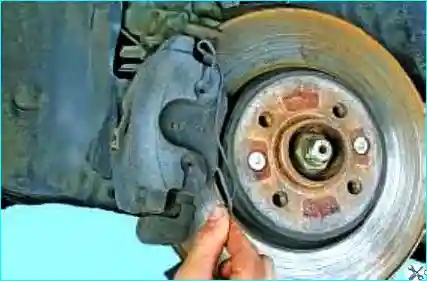
Removing the pressure plate spring

Prying off the lower guide pin boot plug
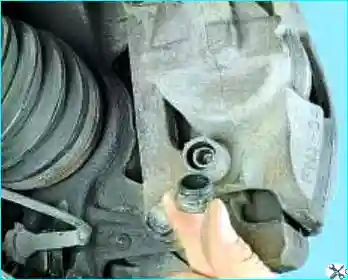
Removing the plug. We also remove the top plug.
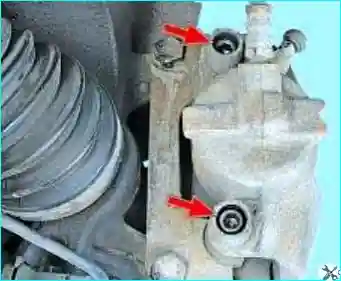
Unscrew the guide pins that secure the sliding caliper.
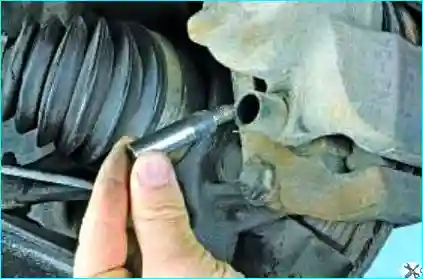
Removing the pins
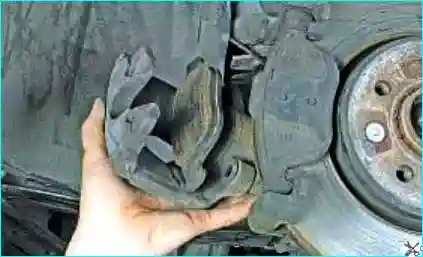
Moving the sliding caliper aside

Removing the inner and outer brake pads from the caliper
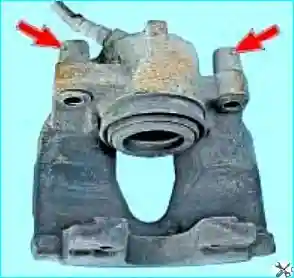
When repairing the brake mechanism, check the condition of the mudguards

Lubricating the guide pins with grease

Using adjustable pliers, press in the piston of the working cylinder
Removing the caliper assembly from the brake shoe guide
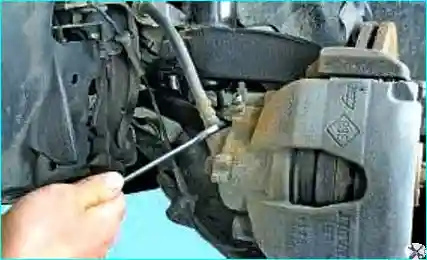
Loosen the brake hose nipple
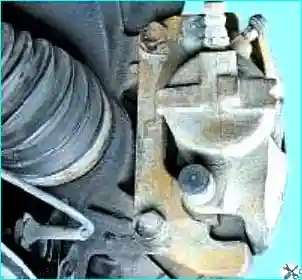
Remove the two bolts securing the brake shoe guide to the steering knuckle fist
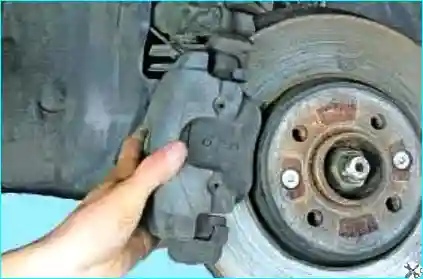
Remove the caliper assembly from the guide.
Finally unscrew the caliper from the brake hose.
Install:
- – brake caliper;
- – guide pin mounting bolts.
Tighten to the specified torque:
- – guide pin mounting bolts (32 Nm);
- – Brake hose (17 Nm).
Securely secure the brake hose and wheel speed sensor wires if they were disconnected.
Do not twist the brake hose. Install the wheels.
Tighten to the specified torque:
- – Brake bleeder nipple (6.5 Nm);
- – Wheel mounting bolts (105 Nm).
If the brake fluid reservoir was not completely drained during the work, bleed air from part of the brake system's hydraulic circuit.
Otherwise, bleed air from the entire brake system's hydraulic circuit.
Check the brake fluid level.





